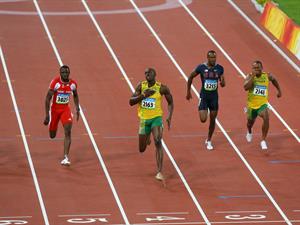
PUMPA - SMART LEARNING
எங்கள் ஆசிரியர்களுடன் 1-ஆன்-1 ஆலோசனை நேரத்தைப் பெறுங்கள். டாப்பர் ஆவதற்கு நாங்கள் பயிற்சி அளிப்போம்
Book Free DemoReference point:
An object's location can be specified using a reference point.

A boy on his way home
Imagine the boy's house is located \(2\) \(kilometres\) north of the railway station. Here, the location of his house in relation to the railway station has been mentioned. The railway station serves as the reference point in this case.
Any other reference points can also be chosen based on our convenience. A reference point known as the origin must be identified to explain the location of an object.The objects which move along a straight line are in rectilinear motion or linear motion. It is the simplest form of motion.
Linear motion:
Example:
Motion of any vehicle on a straight road, soldiers in a parade, and athletes in a \(100\ -metre\) race.

Athletes
Motion along a straight line:
Let us imagine the motion of an object along a straight path. The object starts moving from its reference point \(O\). The position of the object at different instants is represented by \(A\), \(B\) and \(C\). At first, the object travels through \(C\) and \(B\) and then arrives at \(A\). Then it returns to the same path again and arrives at \(C\) through \(B\).
Positions of an object on a straight line path
Hence,
Total path length covered by the object \(=\) \(OA + AC\) \(=\) \(60 km + 35 km\) \(=\) \(95\ km\)
This is known as the distance covered by the object.
Distance:
The total length of a path taken by an object to reach from one point to another is called distance. The SI unit of distance is metre (\(m\)).
Distance only gives the path length covered by an object in numerical value and not its direction of motion.
Important!
Magnitude is the numerical value of a physical quantity.
Some quantities are described only by specifying their numerical values. Such quantities are called as a scalar quantities.
Some quantities that describe both the magnitude and the direction is known as a vector quantities.
From the above image, the distance of the object's final position \(C\) from the initial position \(O\) can be calculated. The numerical value of the object's displacement from \(O\) to \(C\) through \(A\) is given by this difference.